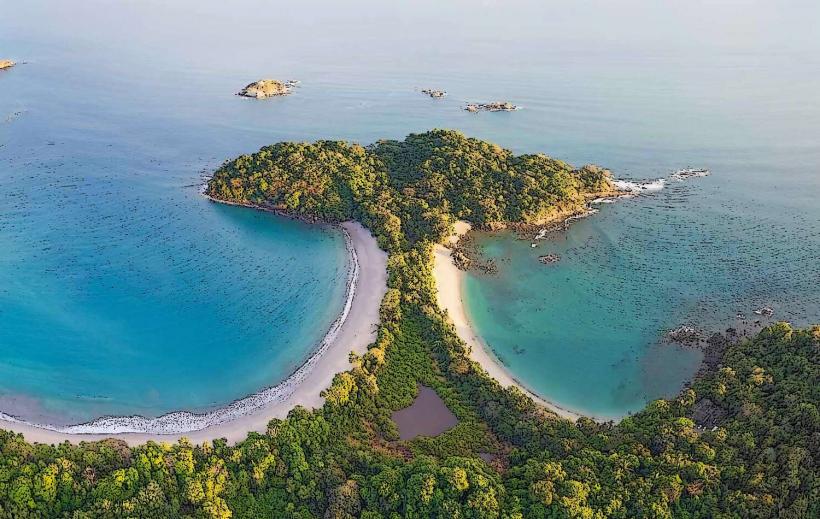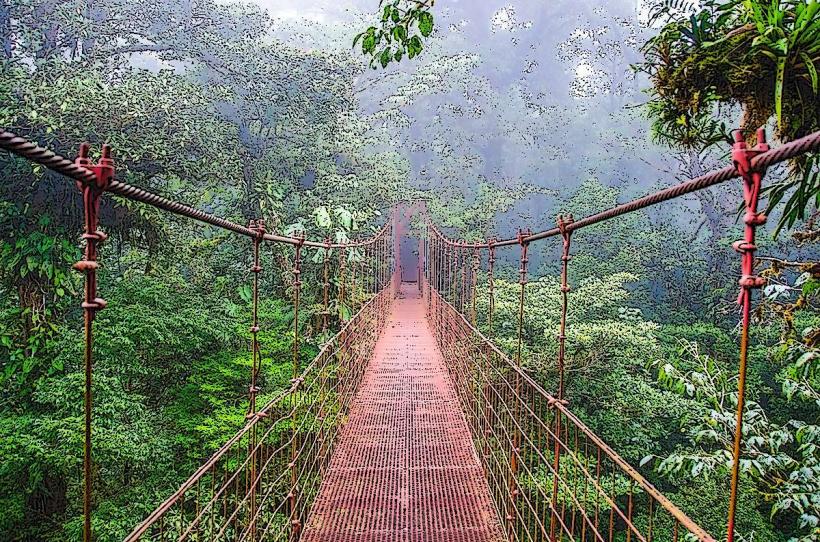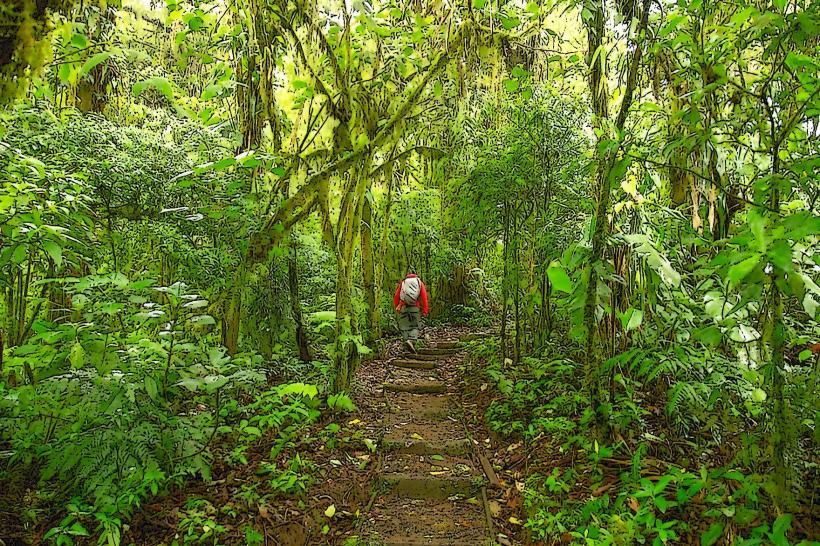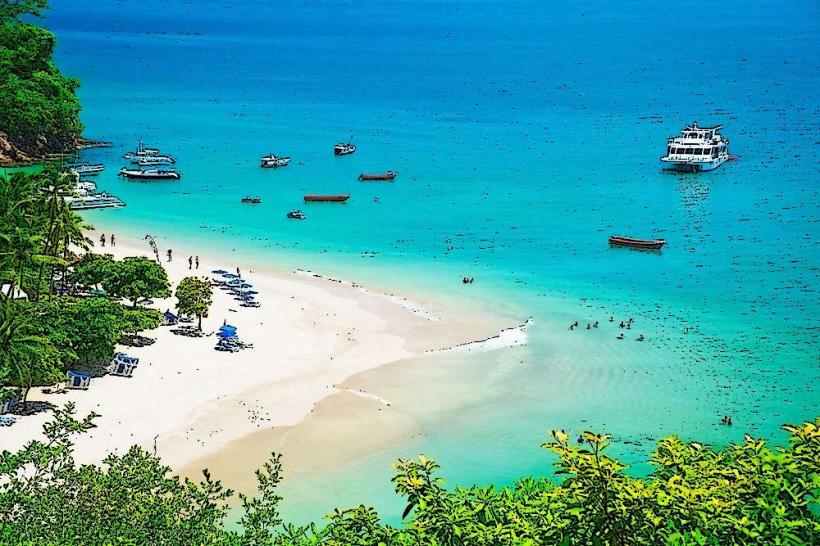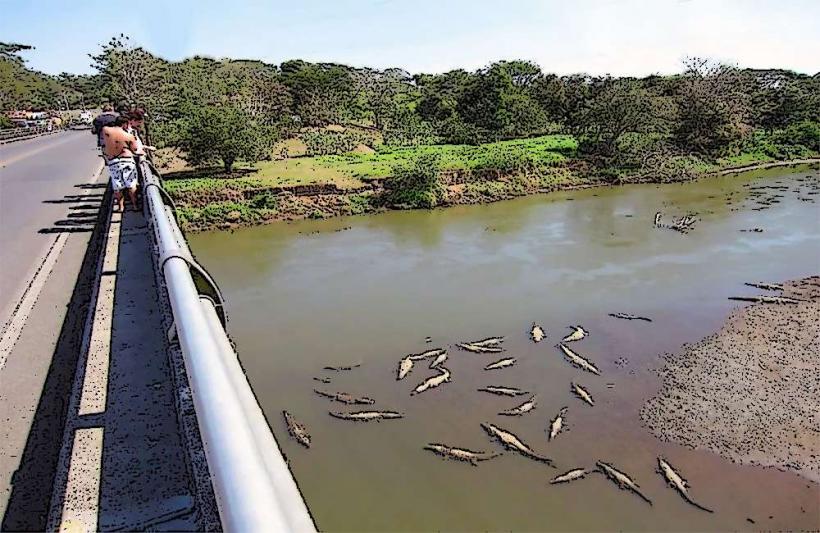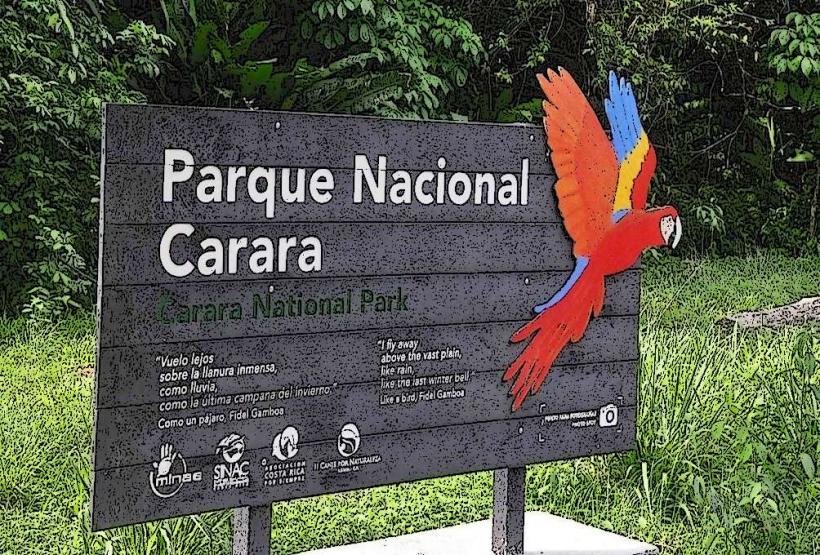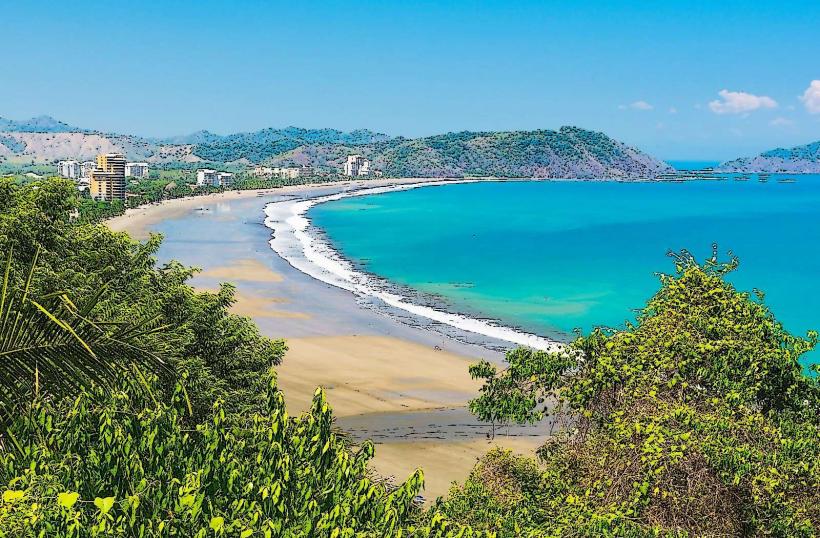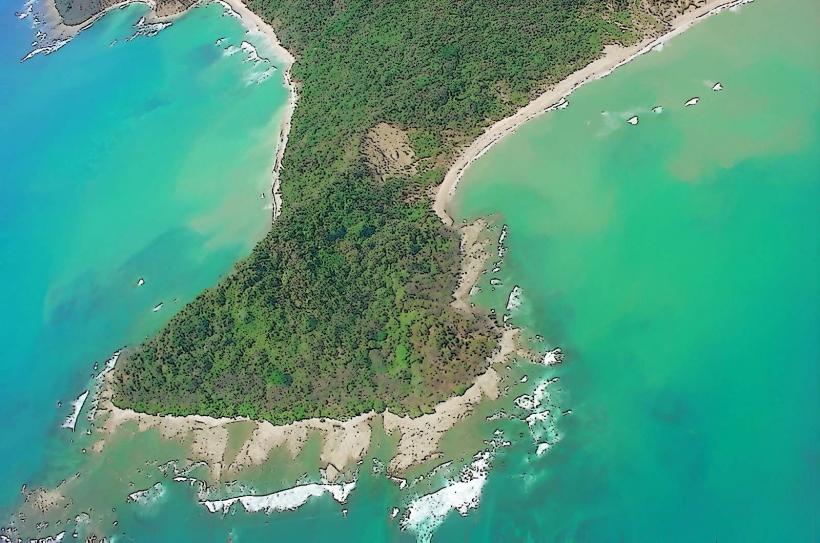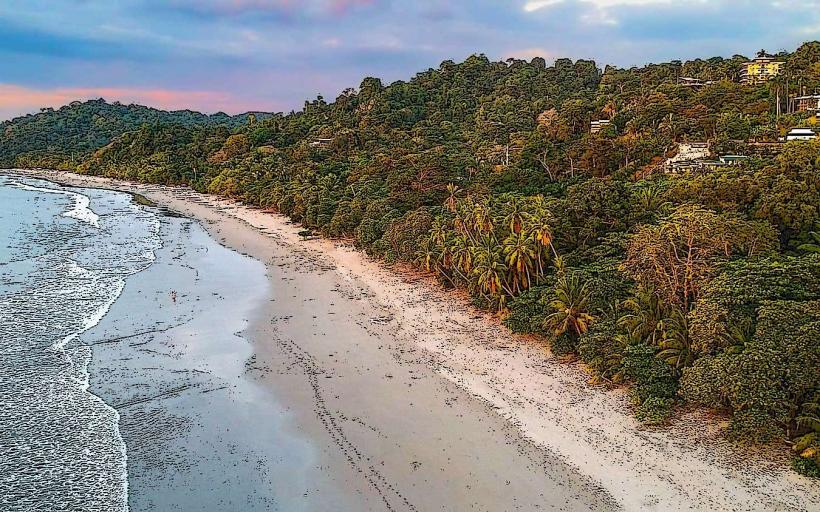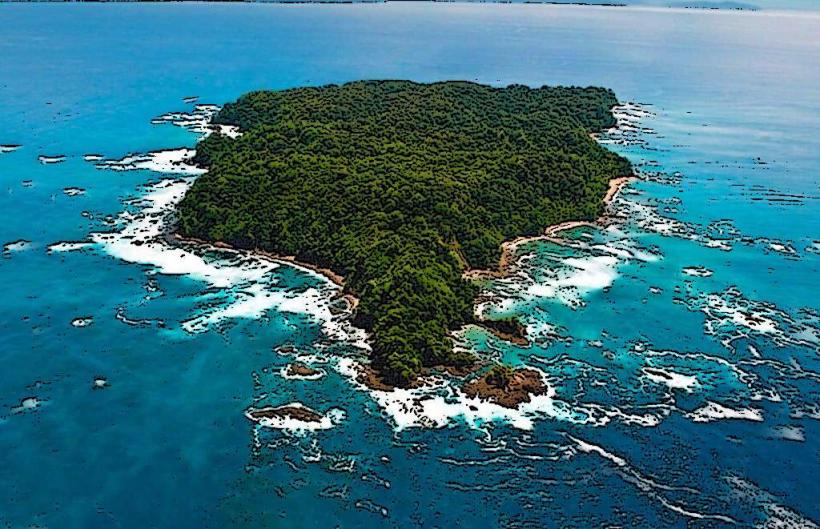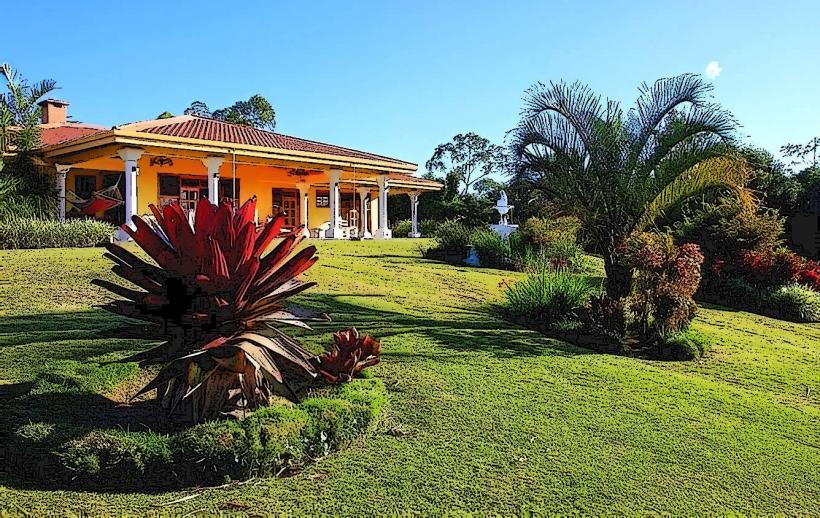Information
Landmark: Curu Wildlife RefugeCity: Puntarenas
Country: Costa Rica
Continent: North America
Curu Wildlife Refuge is a significant protected area located on the Nicoya Peninsula in Puntarenas Province, Costa Rica. Known for its rich biodiversity and pristine ecosystems, Curu serves as an essential sanctuary for various species of wildlife and is a great destination for nature lovers, hikers, and those interested in eco-tourism. The refuge offers a chance to experience a diverse range of habitats, from dry tropical forests to coastal mangroves and beaches.
Overview
- Location: Nicoya Peninsula, Puntarenas Province, Costa Rica.
- Size: Covers approximately 1,100 hectares (about 2,700 acres).
- Established: The refuge was founded in 1983.
- Managed by: Curu Wildlife Refuge is privately managed, and part of the land is owned by a private family with the goal of conservation.
- Access: The refuge is located near the town of Paquera, making it accessible from Punta Arenas or other nearby towns on the Nicoya Peninsula.
Key Features
Diverse Ecosystems:
- Curu Wildlife Refuge is home to a variety of ecosystems, including:
- Tropical dry forest: This forest type is unique due to its seasonal cycle, which includes dry periods that make it one of the most threatened habitats in Costa Rica.
- Mangrove forests: These coastal ecosystems are rich in biodiversity and vital for the health of coastal areas.
- Beaches: Curu is also home to several pristine beaches, perfect for relaxing or exploring the coastal ecosystem.
Wildlife:
- Curu Wildlife Refuge is home to a vast array of wildlife, including:
- Mammals: Visitors can spot species like white-faced capuchin monkeys, howler monkeys, spider monkeys, coatis, ocelots, jaguars, and pumas (although these are more elusive).
- Birds: The refuge is an excellent location for birdwatching, with more than 150 species of birds, including scarlet macaws, white-throated magpie-jays, and peccaries.
- Reptiles and Amphibians: The reserve houses various species of frogs, lizards, and snakes, including the green iguana and the American crocodile.
- Marine Life: The coastal areas also support marine species, such as sea turtles (especially olive ridley turtles) and stingrays, and the waters are frequented by dolphins and whale sharks during certain seasons.
Biodiversity:
- The diversity of plant species in Curu is also impressive, with a range of trees, shrubs, and flowering plants, many of which provide vital habitat for animals and help maintain the delicate balance of the ecosystem.
Hiking Trails:
- The refuge offers several hiking trails that take visitors through its different ecosystems, providing opportunities to observe wildlife in their natural habitats. Some of the popular trails include:
- Sendero La Cascada (Waterfall Trail): A short trail that leads to a beautiful waterfall, offering the chance to enjoy both scenic views and the surrounding wildlife.
- Sendero El Bosque Seco (Dry Forest Trail): A trail through the dry forest ecosystem, where visitors can spot monkeys, lizards, and various bird species.
- Sendero El Manglar (Mangrove Trail): A unique trail that runs through the mangrove forest, providing insight into this important coastal ecosystem and its inhabitants.
Beaches:
- The refuge includes several beaches such as Playa Curu and Playa Mantas, which offer serene, untouched beauty and are perfect for beach walks or relaxation. These beaches are often less crowded than those in nearby tourist towns, offering a peaceful experience.
Activities and Tours
Wildlife Watching:
- Curu Wildlife Refuge is an ideal location for wildlife watching, where visitors can see monkeys, exotic birds, reptiles, and more. Guides are available to enhance the experience by pointing out animals and explaining the ecosystems of the area.
Birdwatching:
- With over 150 species of birds, Curu is a birdwatching paradise. The refuge's mix of dry forest, mangroves, and coastal areas creates diverse habitats for birds, making it a hotspot for spotting species like the scarlet macaw or yellow-naped parrot.
Hiking and Exploring:
- The various hiking trails throughout the refuge provide great opportunities to explore the forests, beaches, and mangroves. Whether you're looking for a short walk to the waterfall or a longer trek through the dry forest, there's something for every type of hiker.
Swimming and Relaxing at the Beaches:
- The beaches in Curu are ideal for swimming, snorkeling, and simply relaxing. Playa Curu is more sheltered and calm, while Playa Mantas offers more open views of the coastline and the ocean.
Guided Tours:
- Local guides are available for tours, and they provide valuable insights into the local flora and fauna. These tours can range from short walks to more in-depth explorations of the refuge's different ecosystems.
Photography:
- For nature photographers, Curu Wildlife Refuge is an excellent location to capture the stunning landscapes and wildlife. From the unique plants to the diverse animals, there's ample opportunity for incredible shots.
Visitor Information
Opening Hours:
- The refuge is typically open daily from 8:00 AM to 4:00 PM.
Admission Fees:
- Entrance to Curu Wildlife Refuge is generally around $15 USD per person, with discounts for children or students.
Getting There:
- Curu Wildlife Refuge is easily accessible from Paquera (about 20 minutes by car) or from Punta Arenas, where visitors can catch a ferry or drive.
- If coming from San José, the drive takes about 4.5 to 5 hours (approximately 150 kilometers). The road to the refuge is mostly paved, though some sections may be bumpy.
Facilities:
- There is a small visitor center that provides information about the refuge's history, ecosystems, and conservation efforts. Basic restroom facilities are available on-site.
- Guided tours are available for an additional fee, and it’s recommended to book in advance.
Best Time to Visit
- Dry Season (December to April):
- The best time to visit Curu is during the dry season, from December to April. During this period, the weather is ideal for hiking, beach activities, and wildlife viewing. The trails are more accessible, and the beaches are typically less affected by rain.
- Green Season (May to November):
- While the green season brings afternoon rain, it also offers more lush surroundings. The refuge is less crowded during this time, and while rain is common, it typically occurs in short bursts, leaving the mornings clear for exploration.
Nearby Attractions
- Isla Tortuga:
- Isla Tortuga (Turtle Island) is located nearby and is a popular destination for snorkeling, scuba diving, and beach outings. Many tours combine visits to both Curu Wildlife Refuge and Isla Tortuga, making for a full day of exploration.
- Punta Arenas:
- Punta Arenas is a small port town and gateway to many of the region's attractions, including the nearby Curu Wildlife Refuge and Isla Tortuga. Visitors can explore the town, enjoy fresh seafood, or take a boat tour to nearby destinations.
- Montezuma:
- The town of Montezuma is a charming, laid-back village known for its stunning waterfalls, surf spots, and vibrant atmosphere. It’s a short drive from Curu and can be a great place to visit for those looking to explore more of the Nicoya Peninsula.
Conclusion
Curu Wildlife Refuge is a hidden gem on Costa Rica's Nicoya Peninsula, offering a peaceful and immersive experience in nature. With its rich biodiversity, serene beaches, and variety of ecosystems, it provides an ideal destination for eco-tourism and wildlife enthusiasts. Whether you're hiking through the dry forest, birdwatching, or simply relaxing on the beach, Curu is a perfect place to enjoy Costa Rica's natural beauty while supporting conservation efforts.

